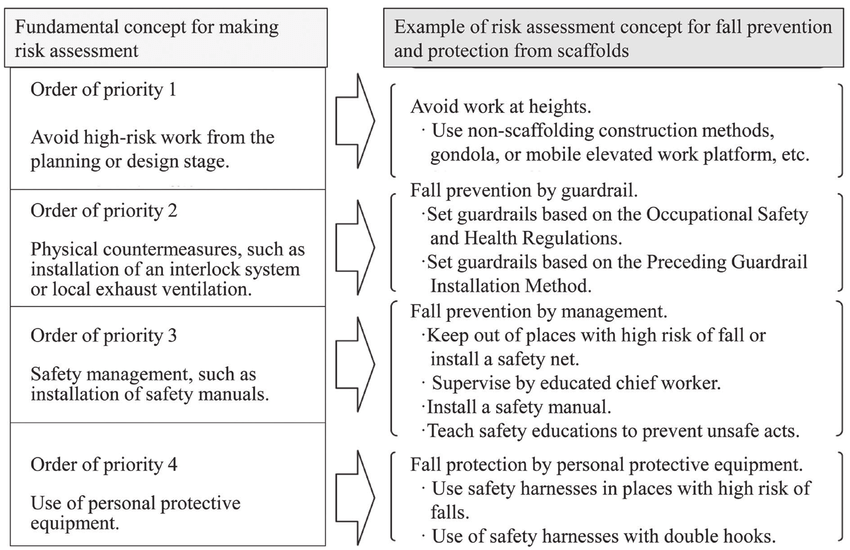8 Simple Techniques For Dementia Fall Risk
8 Simple Techniques For Dementia Fall Risk
Blog Article
Getting The Dementia Fall Risk To Work
Table of ContentsDementia Fall Risk Things To Know Before You Get ThisDementia Fall Risk for DummiesAll About Dementia Fall RiskOur Dementia Fall Risk IdeasGetting The Dementia Fall Risk To Work
Nonetheless, based upon symptoms and signs, such as evidence of head injury or a new focal neurologic deficiency, calculated tomography or MRI of the brain may be indicated - Dementia Fall Risk. An analysis for sources of syncope need to be conducted only if there is strong suspicion, as when it comes to persistent, inexplicable falls
Health care service providers make use of a fall risk analysis to determine your risk variables for falling and make useful recommendations. An autumn threat analysis is important because knowing which elements increase your chances of falling assists you: Reduce your risk of falling or hurting on your own.
All adults 65 years and older should have a first fall threat screening. Have dropped in the previous year. Worry concerning falling.
What Does Dementia Fall Risk Do?

, and goals particularly tailored to patients who are at risk for falls. A is defined as an occasion that results in a person coming to rest unintentionally on the ground or floor or other reduced level (THAT, 2021).
Dropping is the second leading cause of death from unintentional injuries internationally. It is estimated that loss death prices in the United state
Some Of Dementia Fall Risk
If this price proceeds, the CDC prepares for 7 loss fatalities every hour by 2030.
Each year, over 800,000 people are hospitalized due to the fact that of falls. Registered nurses play a major i thought about this role in protecting against drops for their clients via education and learning, evaluating autumn risk, developing much safer settings, and offering interventions in preventing injuries original site from falls.
Person will show careful avoidance steps. Client and caregivers will apply approaches to raise safety and security and prevent drops in the home. Falls are due to a number of factors, and a holistic strategy to the private and environment is very important. Expect a person is considered at high danger for falls after the screening.
The Single Strategy To Use For Dementia Fall Risk
A calls for using a validated tool that scientists have actually taken a look at to be valuable in calling the root causes of drops in a person. As an individual's wellness and situations adjustment, reassessment is called for. The degree of fall threat can be figured out utilizing the assessment of inherent and extrinsic aspects. Requirement evaluation devices can also be used (reviewed listed below).
Individuals are a lot more most likely to fall again if they have actually sustained one or more falls in the past six months. The older population is at enhanced danger of fall-related readmissions based on a study recognizing the variables anticipating of repeat drops linked end results (Prabhakaran et al., 2020).
Furthermore, confusion and impaired judgment boost the original site individual's possibility of dropping. The ability of individuals to secure themselves from drops is impacted by such elements as age and advancement. Older individuals with weak muscles are most likely to drop than those who maintain muscular tissue stamina, flexibility, and endurance. These changes include decreased visual feature, impaired shade assumption, adjustment in center of mass, unstable gait, reduced muscle mass toughness, decreased endurance, altered deepness assumption, and delayed action and reaction times.
The Buzz on Dementia Fall Risk
Much less contrast sensitivity was rather connected with both enhanced prices of falls and various other injuries, while decreased aesthetic skill was just associated with increased autumn rate (Wood et al., 2011). Sensory understanding of environmental stimuli is critical to safety and security. Vision and listening to disability limit the patient's capacity to view hazards in the surroundings.
Older adults who have bad equilibrium or trouble strolling are more probable to fall. These troubles might be connected with lack of exercise or a neurological reason, joint inflammation, or other medical problems and therapies. An important risk factor highlighted in a study is that grownups with rheumatoid arthritis go to high threat of falls, consisting of swollen and tender lower extremity joints, fatigue, and use of psychotropic drugs (Stanmore et al., 2013).
Report this page